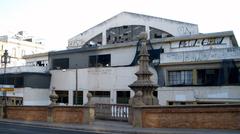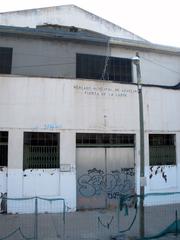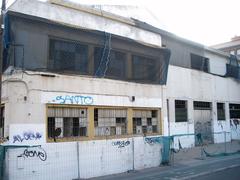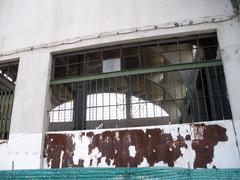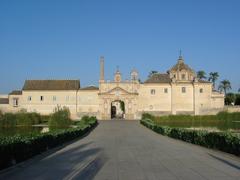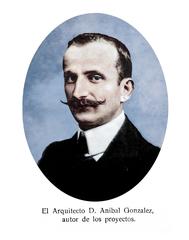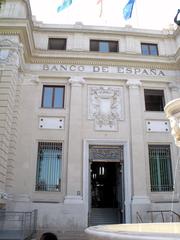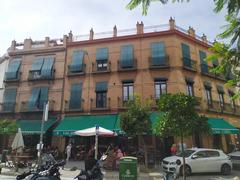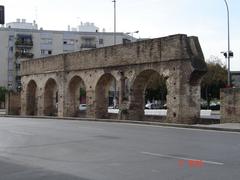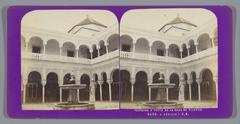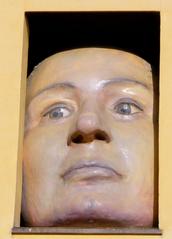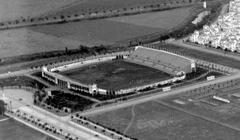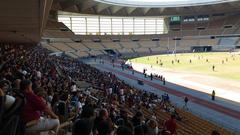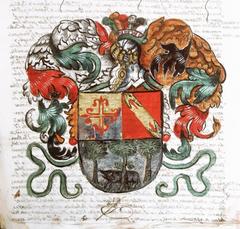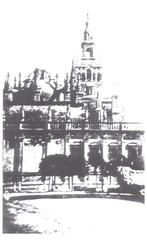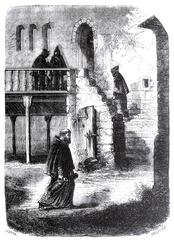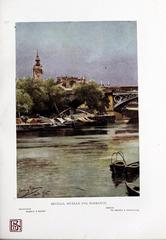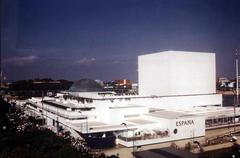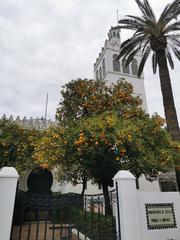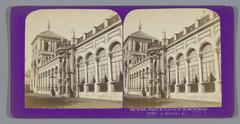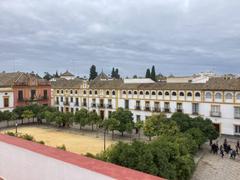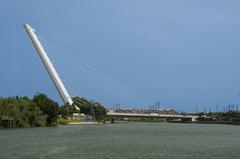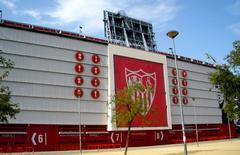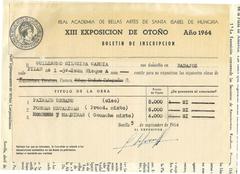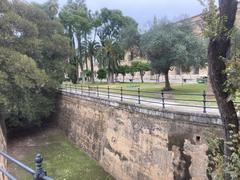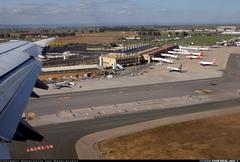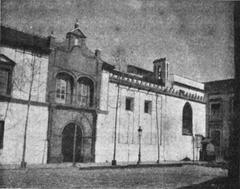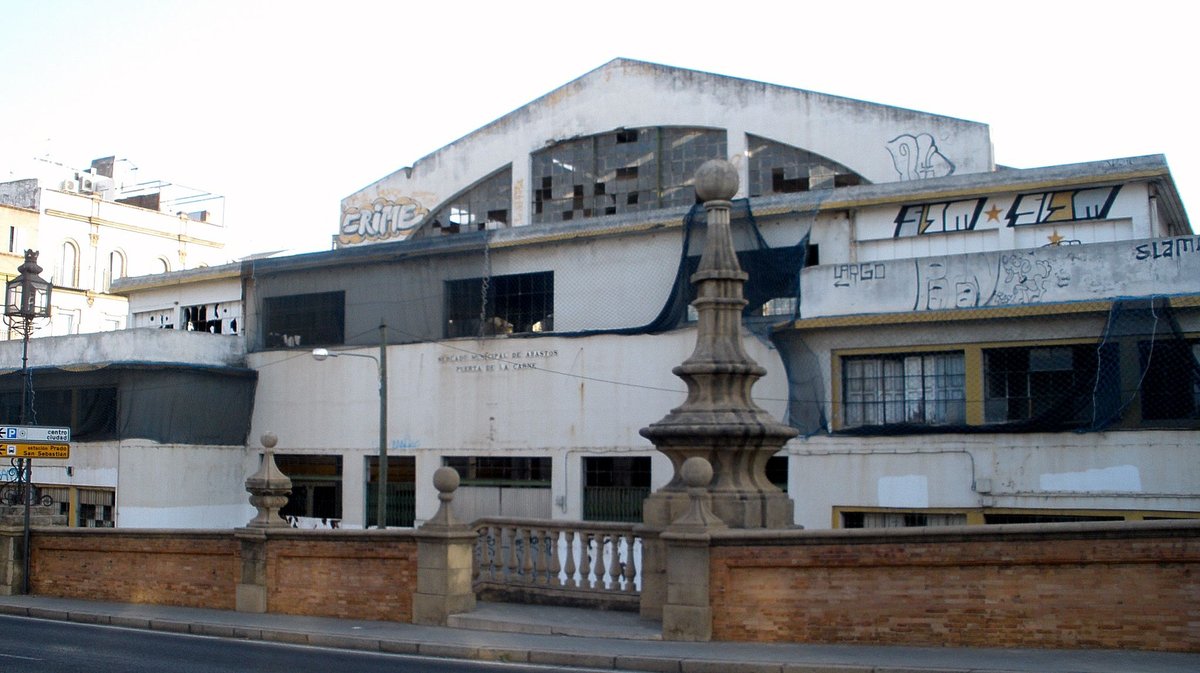
Mercado de la Puerta de la Carne: Visiting Hours, Tickets, and Travel Guide in Seville
Date: 14/06/2025
Introduction
The Mercado de la Puerta de la Carne is a fascinating symbol of Seville’s evolving urban landscape—a place where centuries-old heritage meets bold innovation. Once a bustling marketplace tied to the city’s medieval meat trade, this historic site is currently undergoing a major transformation into MOMO-Tech, an industrial innovation and entrepreneurship center. This comprehensive guide explores the market’s historical roots, architectural significance, ongoing restoration, and offers all the essential information on visiting hours, tickets, accessibility, and nearby attractions for anyone eager to immerse themselves in Seville’s past and future.
Table of Contents
- Introduction
- Historical Evolution
- Architectural Significance
- Cultural and Social Role
- Restoration and Future Plans
- Visitor Information
- Frequently Asked Questions (FAQ)
- Visuals and Media
- Internal Links
- Conclusion and Call to Action
- References
Historical Evolution
Medieval Origins and the City Gate
The Mercado de la Puerta de la Carne traces its origins to the medieval “Puerta de la Carne” or “Meat Gate,” a major entry point in Seville’s city walls during the Almohad period (12th–13th centuries). This gate was vital for the import and taxation of livestock and meat, shaping the commercial and social fabric of the city. The district grew around the gate, becoming home to slaughterhouses, tanneries, and bustling markets—a hub of urban life and economic exchange (Sevilla y al-Andalus).
The Municipal Slaughterhouse: Archaeological Legacy
Beneath today’s market building lie archaeological remains of Seville’s medieval municipal slaughterhouse, or matadero municipal. These remains offer a direct link to the city’s meat industry and economic activity in the Middle Ages, while also reflecting the sanitary and religious regulations of the era (El histórico matadero municipal).
Transformation into a Modern Market
With urban renewal in the 19th and 20th centuries, the Puerta de la Carne gate was demolished, and the slaughterhouse continued to operate until the early 20th century. In 1929, a new public market—designed by Aurelio Gómez Millán and Gabriel Lupiáñez Gely—was built on the site, reflecting Spain’s industrial architectural style and serving as a central hub for fresh produce, meat, and fish (Apoloybaco).
Architectural Significance
Design and Layout
The market’s architecture features open-plan interiors, high ceilings, iron columns, and large windows, maximizing light and ventilation. The central nave, surrounded by stalls, creates a lively and accessible atmosphere, while the building’s double-scale structure and original tilework pay homage to Seville’s artistic heritage (Forma Ciudad).
Preservation of Historical Elements
A defining feature of the Mercado is its integration of archaeological remains. Glass floor panels allow visitors to view the ancient slaughterhouse foundations, while interpretive signage recounts the site’s layered history (El histórico matadero municipal).
Urban Context and Cultural Impact
Strategically located at the intersection of historic barrios, the market serves as a bridge between Seville’s old city and newer districts. Its adaptive reuse demonstrates how public markets can evolve into vibrant centers of commerce, culture, and community engagement.
Cultural and Social Role
From Marketplace to Cultural Hub
Historically, the Mercado de la Puerta de la Carne was the social and commercial heart of its neighborhood. After its closure in 1999, the area experienced a void. The current rehabilitation project aims to restore this social function by transforming the market into a multipurpose center for culture, gastronomy, and innovation (ABC Sevilla).
Artistic and Culinary Programming
Plans for the restored market include a central performance space, exhibition areas, and a gourmet food zone. The cultural programming, developed in collaboration with the Instituto de la Cultura y las Artes de Sevilla (ICAS), will include culinary workshops, artistic events, and initiatives for social inclusion and education (diariodesevilla.es; formaciudad.com).
Restoration and Future Plans
Restoration Timeline and Project Scope
The current restoration, led by the Ayuntamiento de Sevilla, Cámara de Comercio, and FEDEME, is an ambitious €7.5 million project. The initiative is divided into two main phases:
- Phase 1: Structural consolidation and safety reinforcement (December 2024 – March 2025) (El Español).
- Phase 2: Comprehensive rehabilitation, modernization, and adaptation for new uses, running through 2026 (SevillaInfo; El Diario).
The market is projected to reopen in the first half of 2027 (El Correo Web).
MOMO-Tech and the Vivero de Empresas
The site’s new centerpiece will be MOMO-Tech, an industrial interpretation and innovation center, focusing on Seville’s metal sector and broader industrial heritage. MOMO-Tech will include interactive exhibits, educational workshops, and a business incubator (Vivero de Empresas 4.0) designed to support entrepreneurship and advanced technology startups (El Diario; El Español).
Public-Private Collaboration
The project is a model of public-private partnership, with funding and strategic input from the city council and business associations. This approach not only ensures the building’s restoration but also promises sustainable urban renewal (ABC Sevilla; SevillaInfo).
Urban Integration
Plans include reurbanization of the adjacent plaza, improved entrances, and the creation of a community-friendly public space with a kiosk-terrace, integrating the market further into daily city life (Forma Ciudad).
Challenges and Delays
After years of stalled proposals and legal obstacles, the current project has overcome financial and administrative hurdles, clearing the way for sustainable restoration (ABC Sevilla).
Visitor Information
Location and Accessibility
- Address: Av. de Cádiz, 33, Seville, Spain.
- Transport: Served by city bus lines (21, C1, C2), near San Bernardo train station, and within walking distance of the city center and major attractions.
- Accessibility: The renovated market will offer full wheelchair access, tactile signage, and accessible restrooms.
Visiting Hours and Tickets
- Projected Reopening: First half of 2027.
- Hours: Expected to be open Tuesday–Sunday, 10:00 AM–8:00 PM; closed Mondays for maintenance.
- Tickets: General admission will be free. Special workshops and events may require advance registration or paid tickets, available online.
Guided Tours and Events
Guided tours and educational programs will be available, focusing on the market’s history, industrial heritage, and innovation. Cultural and culinary events will be hosted regularly.
Nearby Attractions
Combine your visit with these must-see sites:
- Real Alcázar (official Seville tourism)
- Cathedral of Seville and Giralda Tower
- Barrio de Santa Cruz
- Plaza de España
Practical Tips
- Check updates: Monitor the official Seville tourism website for reopening news and event schedules.
- Payment methods: MOMO-Tech will accept electronic payments (credit/debit cards, contactless).
- Language: Information and tours will be available in Spanish and English.
Frequently Asked Questions (FAQ)
Q: When will Mercado de la Puerta de la Carne reopen?
A: The market is expected to reopen as MOMO-Tech by mid-2027.
Q: Is there an entrance fee?
A: General admission will be free; some events or workshops may require tickets.
Q: Is the site accessible for visitors with disabilities?
A: Yes, the renovated market will be fully accessible.
Q: How do I get there?
A: Easily accessible by bus, train (San Bernardo station), or on foot from Seville’s city center.
Q: What nearby attractions are recommended?
A: Real Alcázar, Seville Cathedral, Barrio de Santa Cruz, and Plaza de España.
Visuals and Media
Interactive Virtual Tour - Coming Soon
Internal Links
Conclusion and Call to Action
Mercado de la Puerta de la Carne is a compelling testament to Seville’s ability to honor its past while shaping its future. From its origins as a medieval city gate and slaughterhouse, through its vibrant years as a local market, to its forthcoming rebirth as MOMO-Tech, the site encapsulates the city’s spirit of resilience and renewal. As the reopening approaches, stay informed via official channels, download the Audiala app for updates and guided tours, and plan your visit to experience the best of Seville’s heritage and innovation. Don’t forget to explore nearby landmarks and immerse yourself in the city’s rich cultural landscape.
References
- Sevilla y al-Andalus
- El histórico matadero municipal
- ABC Sevilla
- Sensational Spain
- SevillaInfo
- El Diario
- Apoloybaco
- Forma Ciudad
- El Español
- El Correo Web
- official Seville tourism website
